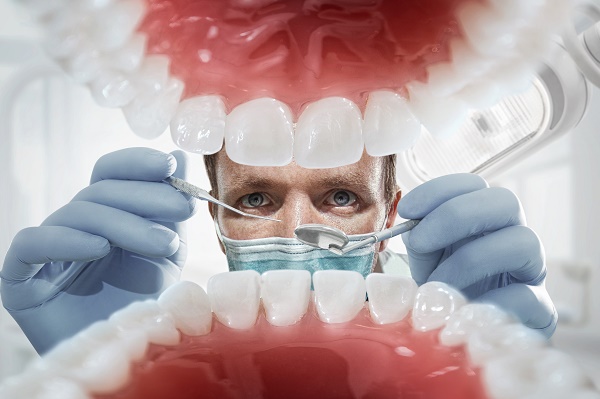 Did you know that George Washington’s dentures weren’t made out of wood?
Did you know that George Washington’s dentures weren’t made out of wood?
That’s right, your 1st-grade teacher wasn’t telling the truth about the man who could not tell a lie. Rather than wood, Mr. Washington’s teeth were made out of ivory, metal, and even human teeth that gave his smile a grainy, wood-like appearance. Can you imagine what they would look like if they were made of wood, though? Maybe termite-infested, definitely stained and soft. Gross!
While this dental myth is interesting and a little eye-opening even, it’s pretty innocent and doesn’t do much in the way of changing your oral health habits. But there are plenty of common myths out there that are potentially dangerous to your teeth.
Because we believe that patient education is one of the best ways to keep your teeth healthy and strong, the SmileCreator at Bingham Farms team is here today to debunk 5 dental care myths to set the record straight.
Myth #1 – A White Smile Equals a Healthy Smile
This belief is extremely common and has some truth. While white teeth are often a desired side-effect of healthy oral hygiene habits, there is much more to your dental health than that.
The shade of your enamel does not indicate infections or cavities, while slightly darker teeth don’t mean that your teeth are unhealthy. Whitening treatments, bleach kits, and stain removing toothpaste can all help make your teeth appear brighter, but in order to keep them healthy, make sure that you brush, floss, and visit the dentist every six months.
Myth #2 – Brushing Harder is More Effective
Have you ever heard the phrase “too much of a good thing is still too much?” This really rings true when it comes to brushing your teeth. Brushing aggressively really does more harm than good, which may seem counter-intuitive.
Brushing your teeth too hard can damage your enamel and gums, especially after you eat. Your enamel softens for a short period of time directly after eating, making it more susceptible to damage.
Plaque is actually so soft that it would be removed with a washcloth. The one reason we use a toothbrush is because the bristles make it easier to get those hard-to-reach spots. Gently brush your teeth to minimize enamel and gum damage—you’ll be better off in the end!
Myth #3 – Bleeding Gums aren’t a Big Deal
The amount of people who mistakenly believe that bleeding gums don’t require professional attention never fails to surprise us. If another part of your body started bleeding at random, you wouldn’t think that it’s nothing, right? Well, you should treat your gums the same way.
Bleeding and sensitivity while brushing often signifies gingivitis, which is the earliest stage of gum disease. And gum disease won’t go away on its own. Left untreated, gum disease can cause your breath to smell, your teeth to loosen, and your bite to shift.
If you see a little bit of blood in the sink when you brush your teeth, make sure to see a dentist right away. Your health is on the line.
Myth #4 – Baby Teeth are Not Important
Too many parents believe that they don’t need to worry if their child loses a baby tooth to decay. They have a permanent tooth coming in soon, so it doesn’t matter, right?
Wrong!
When a baby tooth develops cavities or decay, the permanent teeth underneath can be damaged as well. And if baby teeth fall out prematurely, your child’s bite and alignment may be malpositioned and require corrective orthodontics later on. Take care of your child’s gums and throughout their entire life to keep their mouths free of decay.
Myth #5 – Sugar Causes Cavities
Wait…what? This one can’t be a myth. Every dentist that you’ve ever been to has probably told you to cut down on sugar for a healthier smile, so sugar must cause cavities…right?
Yes and no. The real culprit behind cavities and tooth decay is the bacteria that lives in your mouth. After eating a piece of candy, the sugar molecules left behind on your teeth provide a feast for that bacteria. The bacteria feeds on the sugar and then produces acid waste, which forms plaque.
Plaque is the real offender here. The acidic compounds within plaque and calculus attack your enamel, which in turn leads to cavities and weakens the structures of your teeth.
While sugar isn’t the direct cause of cavities, limiting your consumption of sugary foods and drinks can help keep that cavity-causing plaque from forming on your teeth.
Do You Have a Dental Myth?
Did any of these surprise you? You’d be surprised by some of the myths that our patients bring in to our office We love answering all of our patients questions and helping them learn more about how to keep themselves healthy.
Do you have a dental myth of your own? Let us know. We’re more than happy to help you out.
